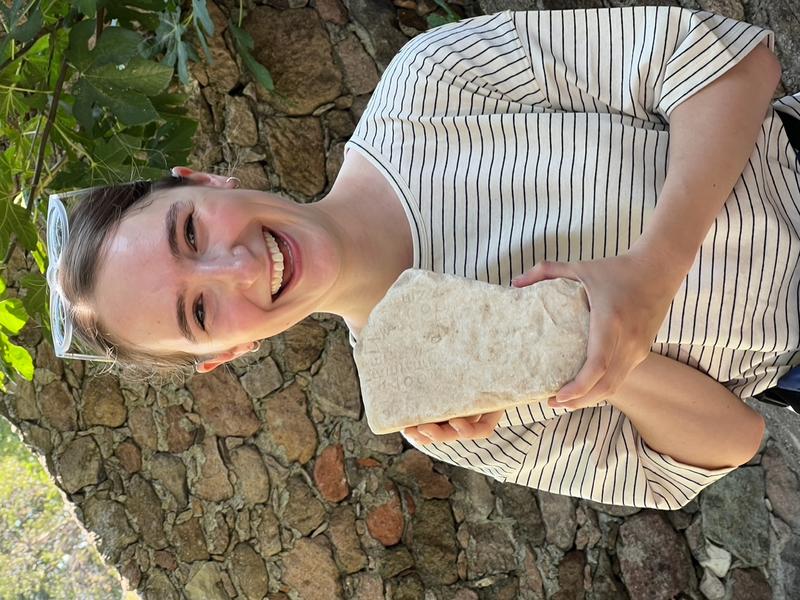Travels in Turkey with the CHANGE project
August saw the CHANGE project team (Andrew Meadows, Marcus Chin, Leah Lazar and honorary member Charles Crowther) head to north-western Turkey for a research road trip. Our interdisciplinary project, based at CSAD, is concerned with the monetary and economic history of the region of Anatolia, from the invention of coinage, through to the absorption of the region by the Roman empire. On this trip, we aimed to explore the economic and environmental dynamics of a part of Anatolia central to our various research interests, and to contextualise its many coinages.
We followed an ambitious itinerary across multiple regions, ranging from Nikaia (Iznik) in the east to Tenedos (Bozcaada) in the west, and Thyateira (Akhisar) to the south. By the end of ten intense days, with 2000 kilometres of mileage, and over 30 sites under our belts (all documented by Andy Meadows on Twitter - @Menetys - if any readers are interested in a more detailed account) we travelled through a diversity of different landscapes, examined impressive excavated and unexcavated archaeological remains, and tracked the epigraphic and numismatic production of cities, kingdoms and empires across multiple centuries.
Our trip featured visits to some of the most well-known and extensively excavated sites of western Turkey: Pergamon, Assos and Ilion, where we were pleased to see the remarkable new museum. We also took a short ferry over to the beautiful island of Bozcaada, where we explored the Venetian-Genoese-Ottoman fortress built over the ancient city of Tenedos. The island provided a strategic harbour for ships heading into the Hellespontine strait in antiquity, just as it became a base for British troops during the Gallipoli campaign in WWI.
Back on the mainland, we met our colleague Dr Tolga Özhan from Çanakkale University at the important Hellenistic sanctuary of Apollo Smintheus (the mouse-slayer), the steps of which are now decorated with artistically positioned model mice. Tοlga provided us with a wonderful tour of the unpublished honorific inscriptions and dedications relating to athletic victors at the Smintheia festival, many standing in situ near a bathing complex, and attesting to the liveliness of the sanctuary in the imperial period. We will eagerly await the publication of these fascinating texts in the coming years. He was also kind enough to offer us sight of a fragment of the famous fifth-century BC decree imposing the use of Athenian silver coinage, weights and measures on cities in the Athenian empire, which was found built into a field wall nearby. A further highlight of the Smintheion visit was coffee and reyhan (basil sherbet) with the rest of the excavation team.
Most of the sites we visited, however, have not seen such extensive excavation or study. A three-hour hike in the heat of the Turkish sun, with dense undergrowth and hundreds of metres of elevation, brought us to the city of Neandreia in the inland Troad. Unfortunately, we only discovered the well-maintained trail up the other side of the mountain once we got to the top. Our dehydrated efforts were nonetheless rewarded with kilometres of well-preserved fortification wall, dating from the classical period onwards: Neandreia, despite lacking prominence in the written record, was clearly the focus of significant investment.
Our hike to Temnos in the north of Aeolis was not so arduous, as our trusty rented Peugeot got us most of the way up a dirt track alongside a solar farm; after less than an hour of walking, we were at the top of a naturally defensible outcrop, perfectly positioned to look over the inland route towards Manisa (Magnesia-under-the-Sipylos). The ancient city was very much in evidence: the ground was littered with stone building blocks, amphora handles, and broken terracotta roof tiles. Unfortunately, illicit treasure-hunters had got there first: one large hole even appeared to have been dug with heavy machinery.
Other highlights included a fleeting visit to the site of Alexander the Great’s victory at the Granikos river, a last-minute diversion to Akhisar museum (at ancient Thyateira), where we stumbled upon a spectacular early fifth-century Greco-Persian relief sculpture (possibly depicting a man of African origin) and a wander through the charmingly ramshackle, stork-populated village of Gölyazi on Lake Uluabat, where we traced the varied reuse of building blocks from ancient Apollonia-on-the-Rhyndakos in Ottoman houses, before enjoying lake-fish and ripe figs for lunch.
Our adventure ended at delightful Iznik, ancient Nikaia, scene of some of the most dramatic conflicts of the early church, and the earliest securely dated Ottoman mosque. We were able to explore the city’s impressive Roman-Byzantine-Ottoman fortifications, but the archaeological museum was under construction, and the Roman-era theatre closed due to ongoing excavation and restoration. From the site’s perimeter fence, however, we were able to see the impressive theatre still very much standing, despite the gloomy predictions of the province’s most famous Roman governor, Pliny the Younger, who had judged the building to be structurally unsound almost two millennia ago. On the way back to the airport, we made a final stop at the bizarre funerary obelisk of one Gaius Cassius Philiskos. Once a landmark on the road between Nikaia and Nikomedia, the early second-century AD monument now sits in a field of nicely cultivated tomatoes.
The blog of the CHANGE project, based at the CSAD in the Faculty of Classics, University of Oxford, between 2020-2025. We will be adding regular updates on our research and news of our project publications.
CHANGE: The development of the monetary economy of Ancient Anatolia c 630-30 BC has received funding from the European Research Council (ERC) under the European Union's Horizon 2020 research and innovation programme (Grant agreement No. 865680).

The walls at Tenedos

Leah holding a fragment of the Athenian standards decree from Hamaxitos, imposing the use of Athenian silver, weights and measures.

The walls of Neandreia

The Oxford CHANGE team with Charles Crowther at Temnos.



